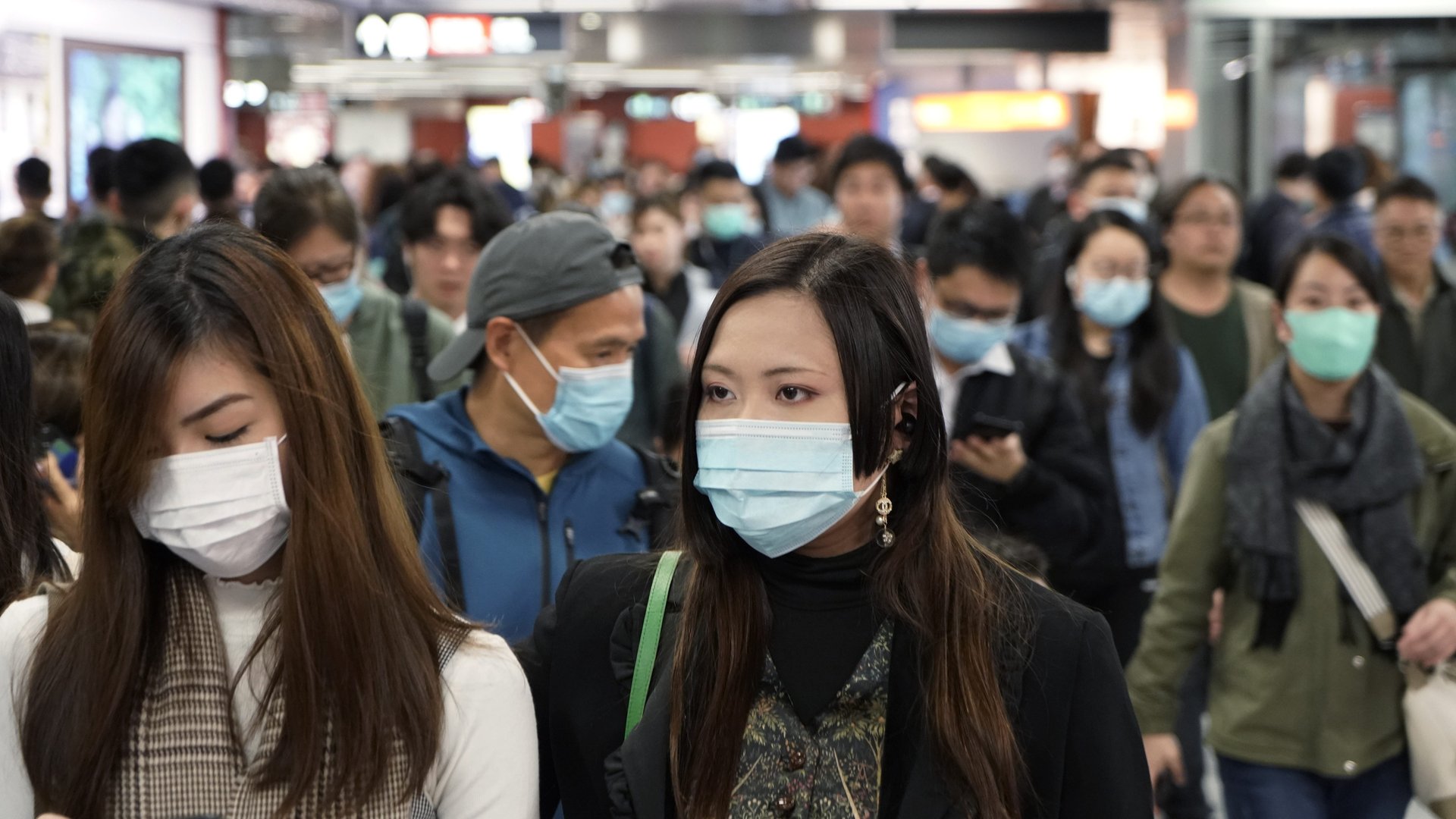“Travels in my flat”: Scenes from China’s mandatory coronavirus staycations
Usually, the weeklong Lunar New Year holiday is a time to travel within the country, or overseas to Japan, Thailand, and other destinations. This year, as China battles a virus that appeared in December, over 50 million people are quarantined in their cities and more still are being urged by authorities to stay home.


Usually, the weeklong Lunar New Year holiday is a time to travel within the country, or overseas to Japan, Thailand, and other destinations. This year, as China battles a virus that appeared in December, over 50 million people are quarantined in their cities and more still are being urged by authorities to stay home.
The drastic measure was first imposed last Thursday (Jan. 23) on the 11 million people of Wuhan, the epicenter of the outbreak of a new kind of coronavirus that has infected at least 6,000 people in the country and killed more than 130. In the days that followed, the quarantine expanded to include more than a dozen other cities. To stop the spread of the virus beyond the mainland, Beijing has barred tour groups from traveling abroad; Hong Kong plans to cut flights to and from China this Friday; and British Airways has halted its two daily direct flights from the UK to Beijing and Shanghai.
Even in cities outside the lockdown, people have been generally advised by the government to not to venture out—and in any case, there’s less and less to do. First the state-run broadcaster CCTV advocated the cancellation of the traditional family gatherings (link in Chinese) that mark the Lunar New Year festival. Then movie theaters were shut down. Shanghai Disneyland is closed. Now Starbucks has said it will shutter its 2,000 cafes. Schools, ranging from universities to kindergartens, have also been told to delay opening (link in Chinese) indefinitely.
Despite mounting worries about the virus, people are getting creative about entertaining themselves on their obligatory “staycations.”
For starters, many of them tuned in to some unexpectedly popular programming—two live-streams of the construction of two temporary hospitals in Wuhan generated more than 18 million concurrent views on Tuesday (Jan. 28). The buildings, which broke ground last week, are expected to add at least 2,000 beds to support the city’s overwhelmed hospitals. There were still more than 13 million people watching the construction of one of the hospitals today (Jan. 29) on a website hosted by CCTV.
The live-stream offered little more than a view of the construction site, with some workers and cranes moving about in the distance. Despite low production values and the lack of any visible drama, tens of millions of viewers, who jokingly called themselves “supervisors,” flooded the comment section with encouraging words such as “Wuhan add oil, China add oil!” Some bestowed nicknames on their favorite cranes, such as “little red,” and cheered them on to dig faster.

Some Wuhan residents may have adopted techniques from Hong Kong protesters to keep their morale up. In a video shared widely on Twitter, some people, reportedly in Wuhan, were chanting “Wuhan, add oil!” to each other from the windows of residential buildings. In Hong Kong last year, people took to shouting pro-democracy slogans from their windows at 10pm every day.
China’s social media platforms, an effective place for people to vent their frustrations toward the government over its handling of the public health crisis, have also become a place for people to telegraph the extreme boredom they’re experiencing.
On short video app Douyin, the Chinese version of TikTok that has over 400 million daily active users, hashtags like #myplainholiday and #travelsinmy flat have started trending, with the former racking up more than 3 billion views at the time of writing. One popular format shows people with their family members in each room of their flat, including the bathroom and kitchen, making a thumbs-up gesture—mimicking the photos people usually post from a well-known tourist venue. Then they get back into bed.
In another widely shared video, a middle-aged man in pajamas and a face mask was seen fishing from a small fish tank in his living room.
One played snooker, not with a cue stick, but with a chopstick and cherry tomatoes.
Others recreated a ring toss game using anything they could find at home…
…or used mahjong tiles to build Macau’s signature tower.
Even cats could not avoid being dragged into random activities by their bored owners, such as math lessons and card games.
Hu Xijin, the chief editor of China’s hawkish newspaper Global Times also weighed in, sharing a video of people playing mahjong but betting with face masks instead of money. The items are in short supply in some areas in China.